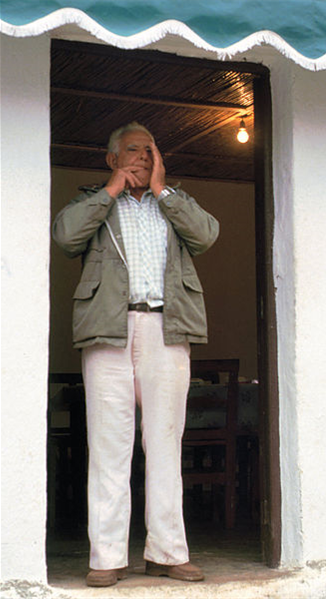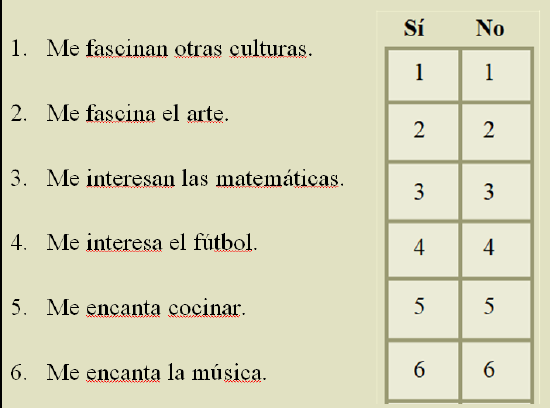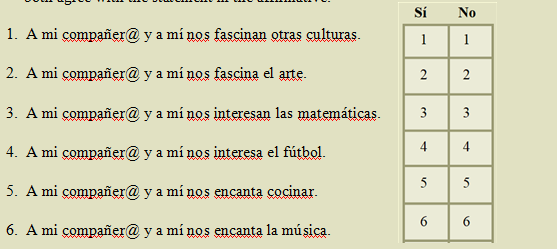7.1: Lectura cultural
- Page ID
- 44574
El silbo gomero es un lenguaje silbado (whisteled) que se usa en las Canarias, una cadena de islas cerca de la costa de África que pertenece a España. La Gomera es la isla donde más se usa el silbo. Es una tradición muy antigua, que empezó hace siglos con los indígenas de la región. Desde entonces, se ha modernizado y adaptado al castellano (el español). El silbo crea tonos que se pueden reconocer a distancia, mucha más distancia que la lengua hablada. Por eso, el silbo ayuda a los habitantes de las islas a comunicarse, porque la tierra es muy montañosa y no se puede caminar fácilmente de casa a casa. Entonces, los gomeros usan el silbo si necesitan ayuda, para preguntar si todo está bien con los vecinos, para llamar a un médico, para anunciar fiestas y funerales, etcétera. Sin embargo, con la llegada de los móviles, ya no es tan difícil comunicarse y hay que hacer un esfuerzo a conservar la lengua. Desde el año 1999, los niños gomeros aprenden a silbar en la escuela en la Gomera para que se conserve esta lengua rica y única.


Before beginning this chapter, it is important to recognize which skills and tasks you will be expected to learn to perform. Do you already have some previous skills or knowledge in these areas that you can use to your advantage? Are there any topics that you foresee being difficult? If so, it is a good idea to pursue additional assistance to get ahead of any potential issues. You are the master of your education—you have the power to take ownership of your learning!
After completing this chapter, I will be able to:
· Differentiate between the verbs saber and conocer to discuss things that are known in different situations.
· Manipulate sentences to incorporate indirect object pronouns.
· Express my preferences and other interests using verbs like gustar.
· Assemble sentences using demonstrative adjectives and pronouns to describe the world around me.
· Make comparisons of equality and inequality.
· Analyze a group of people or items and describe the extremes (ie. Tallest, shortest) using superlatives.
· Use the superlative suffix ísmo/a/os/as to add emphasis to characteristics.
Pre-chapter activity
Pre-activity: An important part of this chapter involves describing your preferences and interests using verbs like gustar. In this activity, you will interpret each of the paragraphs below that describe the preferences and interests of two people. Follow the steps outlined below to discuss your own preferences and interests.
Soledad
A mí me interesa el mundo. Me fascina conocer otras culturas y nuevos lugares y me fascinan las lenguas extranjeras. No me interesan las matemáticas. A todos mis amigos les encanta el fútbol pero, a mí no. No es que no me gusta nada, sino que no me interesa mucho. Me encanta cocinar y me gusta intentar a preparar recetas internacionales. A mi novio le gusta probar lo que cocino yo. A él le gusta lavar los platos. ¡Qué bien, porque a mí no me gusta nada!
Andrés
Soy artista y mí me fascina el arte. También, me encanta la música. Me gusta mucho el rock alternativo y el métal. No sé tocar ningún instrumento pero, me interesa la idea de aprender a tocar la guitarra eléctrica o la batería. No me interesa el bajo ni tampoco me interesan los instrumentos de viento. A mi esposo no le interesa mi música. A él le fascinan los Beatles y los demás gigantes del rocanrol. A él también le encanta el motown y la big band. Nuestros gustos musicales son muy diferentes pero, mi música no le molesta a mi esposo y que su música no me molesta a mí. ¡El amor es compromiso!
During-activity:
Paso uno: Read the statements and check Sí or No depending on whether or not the statement accurately describes you.
1. Me fascinan otras culturas.
2. Me fascina el arte.
3. Me interesan las matemáticas.
4. Me interesa el fútbol.
5. Me encanta cocinar.
6. Me encanta la música.

Pre-chapter activity
Paso dos: Use the questions provided to interview a classmate. Note their responses by filling in their name in the first blank and adding “no” in the second blank if their response is negative.
1. ¿Te fascinan otras culturas?
A ________ ________ le fascinan otras culturas.
2. ¿Te fascina el arte?
A ________ ________ le fascina el arte.
3. ¿Te interesan las matemáticas?
A ________ ________ le interesan las matemáticas.
4. ¿Te interesa el fútbol?
A ________ ________ le interesa el fútbol.
5. ¿Te encanta cocinar?
A ________ ________ le encanta cocinar.
6. ¿Te encanta la música?
A ________ ________ le encanta la música.
Paso tres: Check the boxes to show what the two of you have in common. Only select Sí if you both agree with the statement in the affirmative.
1. A mi compañer@ y a mí nos fascinan otras culturas.
2. A mi compañer@ y a mí nos fascina el arte.
3. A mi compañer@ y a mí nos interesan las matemáticas.
4. A mi compañer@ y a mí nos interesa el fútbol.
5. A mi compañer@ y a mí nos encanta cocinar.
6. A mi compañer@ y a mí nos encanta la música.

Post-activity:
With a partner, discuss what you notice about how the language works when discussing preferences and interests. Be prepared to discuss as a class.


